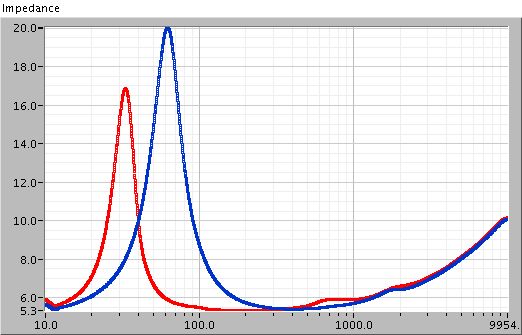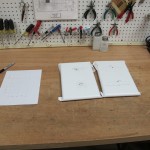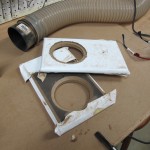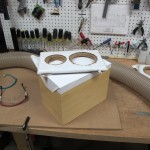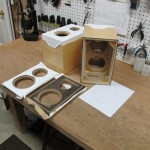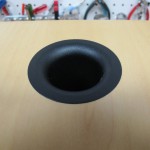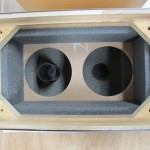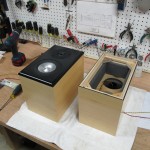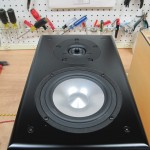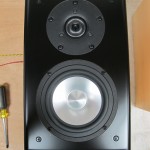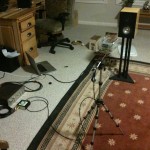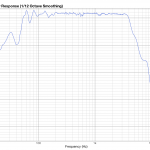I’ve had a pair of Jordan JX-92S sitting around for a year or so (part of a DIYAudio group buy). I built a set of transmission line speakers around these drivers several years ago, and while they are amazing drivers, they do have issues in the treble. So given that I also have a pair of the very nice Vifa XT-25 tweeters that should mate nicely with the Jordan, these drivers should make a great little speaker. The JX-92’s really work well in a transmission line or a quarter wave tube, but I was looking for a much smaller speaker. The Jordan is an amazing driver, but it’s still a small 5 1/2″ driver.
My measurements after a day of break-in show that the JX-92 has the following parameters:
| Fs | Qms | Qes | Qts | Vas |
|---|---|---|---|---|
| 62.0304 | 2.4919 | 0.8639 | 0.6415 | 7.8288 |
| Re | Mms | no (%) | Sp | So |
|---|---|---|---|---|
| 5.1570 | 7.2457 | 0.2076 | 85.3730 | 87.2273 |
The Fs is unusually high, which indicates that the driver is not yet fully broken in. However the Q of the driver isn’t very far removed from what others are getting from these new “more efficient” JX-92 drivers. The Q being so high is bad for my hopes of making a small speaker from this driver. Based on these parameters, I need a 1.3cu-ft box if I was going to used a ported enclosure. That’s a huge floor-standing box. A transmission line would also be a slightly smaller floor-standing box. A sealed enclosure would be small, and completely anemic.
As much as I like the Jordan drivers, A speaker with a 0.5 cu-ft enclosure or larger lends itself to a a whole other class of drivers. For example in a 0.5 cu-ft vented box, the Zaph SR-71 speaker outclasses the jordan in every way (in the midrange down; with a driver that is 1/3 the cost of a jordan). A floorstanding speaker lends itself to even more impressive driver and frequency extension. So in order for the Jordan JX-92 to be a useful driver to me, it HAS to live in a small enclosure.
I bought a set of the Parts Express 0.25 cu-ft enclosures and have cut them into a set of ported enclosures. I’ve got the port tuned for about 55 Hz at this point, but it should actually be a bit lower. I’m considering trying an extended bass shelf design in this little enclosure.
The problem with this driver selection is that the woofer really is trying to be a tweeter, and the tweeter thinks it’s a woofer. So I’m slapping both drivers down with third order crossovers. It’s a good first cut, but not perfect. Coming up will be the final crossover design and my Labview speaker measurement software in action. I’m using Fuzzmeasure and my own software in a MacBook Pro with an M-Audio Transit USB soundcard.
Below are some pictures of the fabrication and some of the crossover design.

